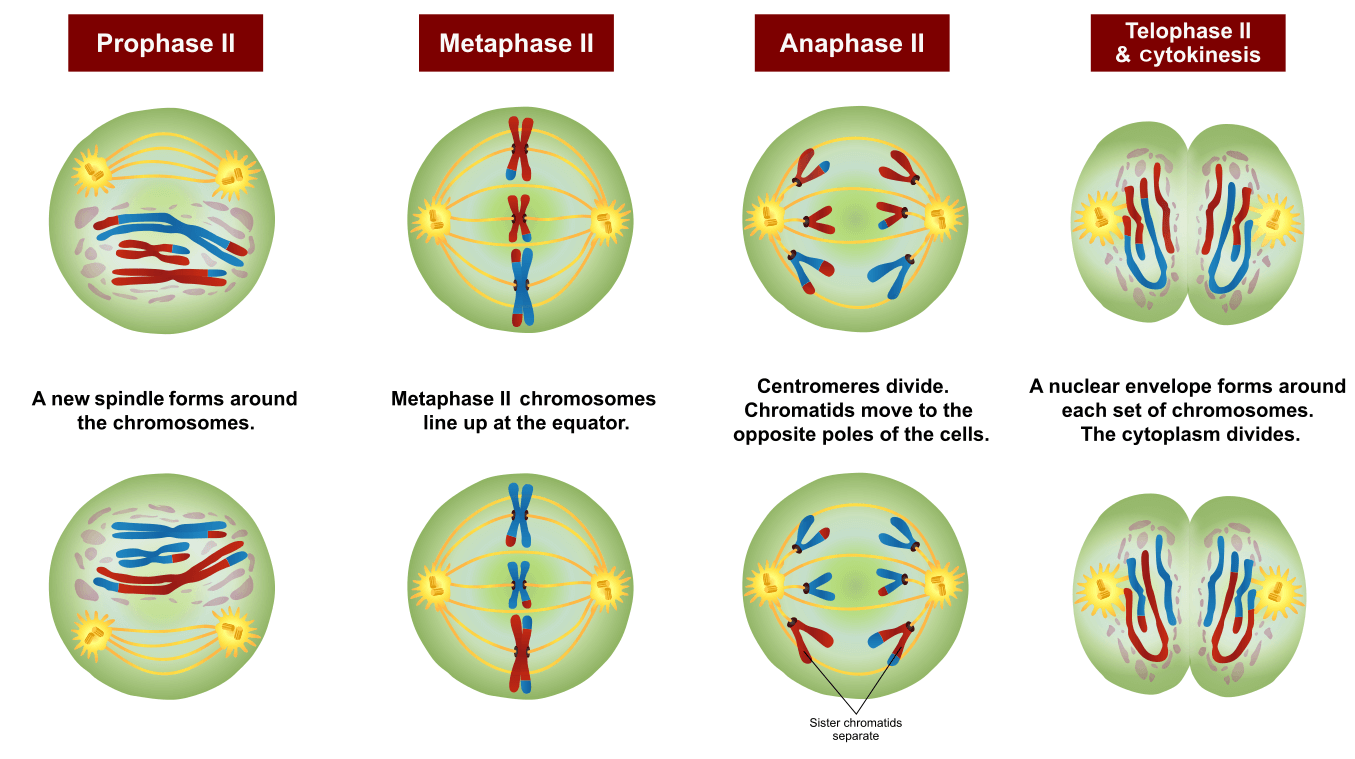The last four (those ending in "ii") are those of the second meiotic division, meiosis ii.
In meiosis, the cell divides more than it does in mitosis. In meiosis i, chromosomes in a diploid cell resegregate, producing four haploid daughter cells. Table of contents objectives and warm ups. meiosis is a biological process in plants and animals, as well as in some microorganisms. Browse 1,576 mitosis stock photos and images available, or search for cell mitosis or mitosis diagram to find more great stock photos and pictures.

meiosis worksheet with answers meiosis mitosis answers start studying meiosis vocabulary matching sheet.
In this quick and easy activity students move through the basic steps of meiosis using coloring pencils in order to visualize possible gametes that a dragon could produce. Because gametes need to have half the number of chromosomes as normal cells, cells divide twice in meiotic reproduction, which is known as meiosis i and meiosis ii. However, during meiosis there are two cell divisions, and the cell goes through each phase twice (so there's prophase i, prophase ii, etc.). There are two larger phases of meiosis that are referred to as meiosis i and meiosis ii. Each stage is subdivided into several phases. This crossing over is an exchange of genes. The process of meiosis is divided into 2 stages. Notice that these four meiocytes are genetically different from one another. Count the number of divisions in meiosis. Before a dividing cell enters mitosis, it undergoes a period of growth called interphase. meiosis is the type of cell division that produces gametes. Mitosis results in the production of two genetically identical diploid cells, whereas meiosis produces four genetically different haploid cells. meiosis is part of the sexual process because gametes (sperm, eggs) have one half the chromosomes as diploid (2n) individuals.
meiosis i occurs in 5 steps called: Count the number of divisions in meiosis. meiosis occurs in what type of cells: Another difference between mitosis and meiosis is that, during mitosis, there is only one cell division, so the cell goes through the steps of prophase, metaphase, anaphase, and telophase once. Showing top 8 worksheets in the category answer key to meiosis.

At this point each lab group can proceed to model the steps of meiosis.
Labeled diagram mitosis is a process of cell division which results in the production of two daughter cells from a single parent cell. meiosis is different from mitosis, in that 4 haploid cells are the end result, whereas the end result in mitosis is 2 diploid cells. meiosis is a biological process in plants and animals, as well as in some microorganisms. Pairs of chromosomes are lined up at the center of the cell and then pulled to each side. Prokaryotes that lack complex dna structures like chromosomes reproduce by splitting through binary fission. Images plant cells stained for nuclei with one cell in metaphase squash preparation of onion root tip cells stained to reveal chromosomes, bright field illumination, light microscopy. In the process, it divides a single nucleus, containing two sets of replicated chromosomes (chromosomes composed of two sister chromatids), into four nuclei, each containing a single set of unreplicated chromosomes. 1 objective 1 objective 1 overview of meiosis in a cell where 2n = 6 „ only diploid cells can divide by. Prophase ii, metaphase ii, anaphase ii, and telophase ii (see figure below). meiosis is pivotal to reproduction or procreation. Because gametes need to have half the number of chromosomes as normal cells, cells divide twice in meiotic reproduction, which is known as meiosis i and meiosis ii. Notice that these four meiocytes are genetically different from one another. The genome is composed of a number of chromosomes—complexes of tightly coiled dna that contain genetic information vital for proper cell function.
The chromosomes can be arranged on this surface as. The large piece of paper will represent the cell. steps of meiosis i 1) prophase i. Diploid (2n) haploid (n) meiosis is sexual reproduction. It is this step in meiosis that generates genetic diversity.

meiosis is the process of cell division that halves the chromosome number and makes gametes (human gametes contain 23 chromosomes).
It is the longest phase of meiotic division involving a series of events and is divided into the following steps: All of the cells in our body are diploid (2n). What phase is the cell in? List, describe, diagram, and identify the stages of meiosis. Because each resultant daughter cell should be genetically identical to the parent cell, the parent cell must make a copy of each. Another difference between mitosis and meiosis is that, during mitosis, there is only one cell division, so the cell goes through the steps of prophase, metaphase, anaphase, and telophase once. For example, a cell with 2n = 6 chromosomes could have any of the. A zygote is the precursor to an embryo, or the first stage in organism development. Photo guide and word doc assignment included. During prophase i, homologous chromosomes pair and form synapses, a step unique to meiosis. meiosis i occurs in 5 steps called: meiosis is the process of cell division that halves the chromosome number and makes gametes (human gametes contain 23 chromosomes). The phases of meiosis.more free lessons at:
37+ Steps Of Meiosis With Pictures Gif. Phases of meiosis there are two divisions in meiosis; What is the structure labeled "x" Many organisms package these cells into gametes, such as egg and sperm. It is this step in meiosis that generates genetic diversity. Mitosis results in the production of two genetically identical diploid cells, whereas meiosis produces four genetically different haploid cells.






